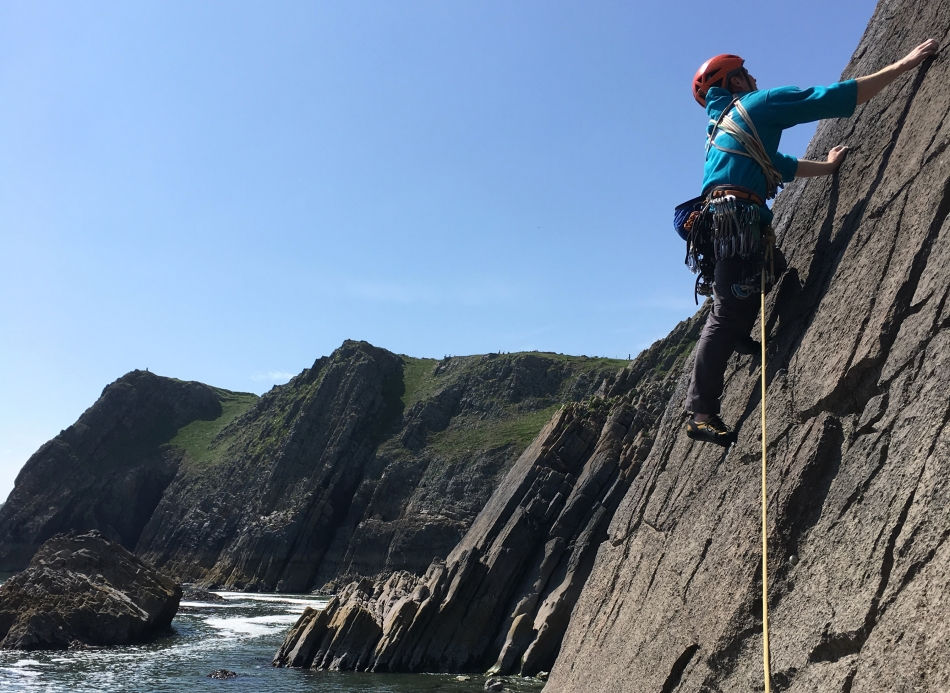“If Underwood gets five wickets,” he announced. “We’ll get ice creams.”
But Underwood got six, so we got flakes too. My love for beaches was sealed. Later we walked along the coastal path and I remember one startling image, seared on my brain, of looking down to a turquoise sea that was boiling and crashing, raging at the dying of the light. And there, under a rock arch, deep in a cleft of savage vertical cliff, with suggestions of unseen caves, was a patch of sand.
Even from over a hundred feet up, it was clear that no human had set foot there. My boyish head set to work on the cliff, calculating how many lengths of washing line would be needed for the descent. There was an almost visceral need to place my naked foot on that sand. There was also a tingling in my extremities and a hollow in my stomach at the thought of dangling on a rope over that height, especially a washing line.
Telescope time forward by four decades and I’m there again, a little further west at Stanhope Head, lying face down with my head over the edge, gazing down at an untrodden patch of sand. I have the same tingles and excitement, but this time is significantly different: I’ve got Henry Castle of Climb Pembroke with me. And Henry knows how to get down there. He is the man to put my foot on that patch of sand. If I am Neil Armstrong, Henry is NASA, the lunar lander, and Buzz Aldrin combined. He is also the man with the sandwiches. We eat them as we contemplate the drop. I don’t seem to have much appetite.
“Forty-three metre abseil,” says Henry. “Then maybe two hours down there before the tide comes in.” Henry goes first and I follow. The last fifteen metres are in free air, spinning and bouncing gently, feeling rather graceful until the ungainly moment when I hit the ground. The Eagle has landed. And the world is different. A few seconds ago we were part of the cliff-top community: dog-walkers, hikers, strollers, a lady on a horse. The National Trust café, with its fruit scones and cappuccinos: “Chocolate sprinkles, sir?”
Now we are Robinson Crusoe.

The feeling is extraordinary: a rapidity of dislocation that only time travellers might match. There are no footprints in that damp sand, not even a Man Friday. If we shouted for help, no one would hear us and there is no phone signal. Our lives depend on our own resources. The joking ends and we go silent, wandering separately for some time, as though needing to savour that moment.
And then we draw together, become a team. We climb over a subterranean rock wall and descend to new caves that lead to other patches of sand, ones that cannot even be seen from above. Echoes of ocean waves drown our whispers as we examine secret grottoes of stalactites. Between the tides? How is that possible? There is wreckage but not much. This place is clean: purified every twelve hours by immersion, emerging each time as something holy and enchanted.